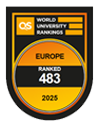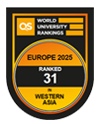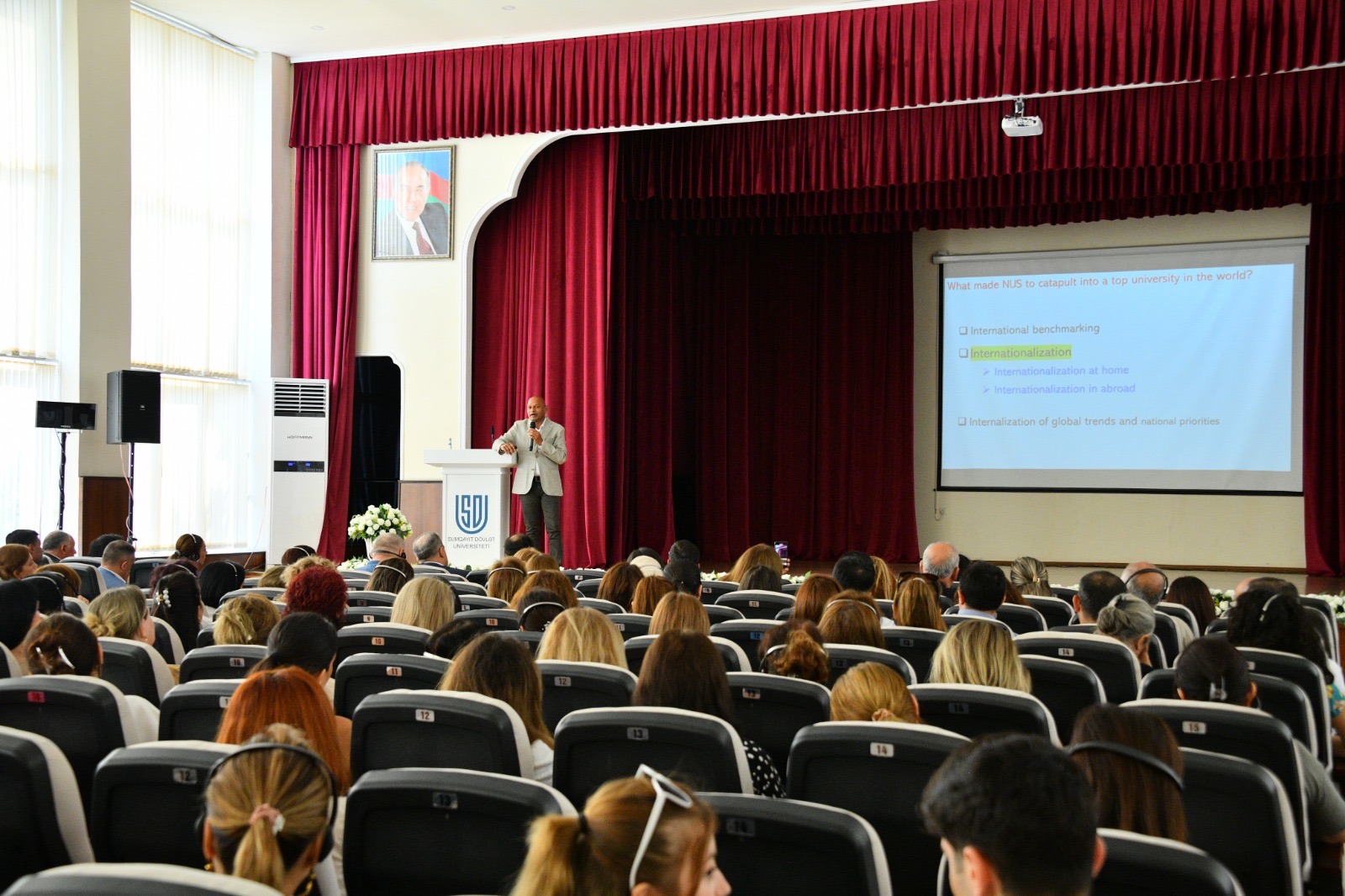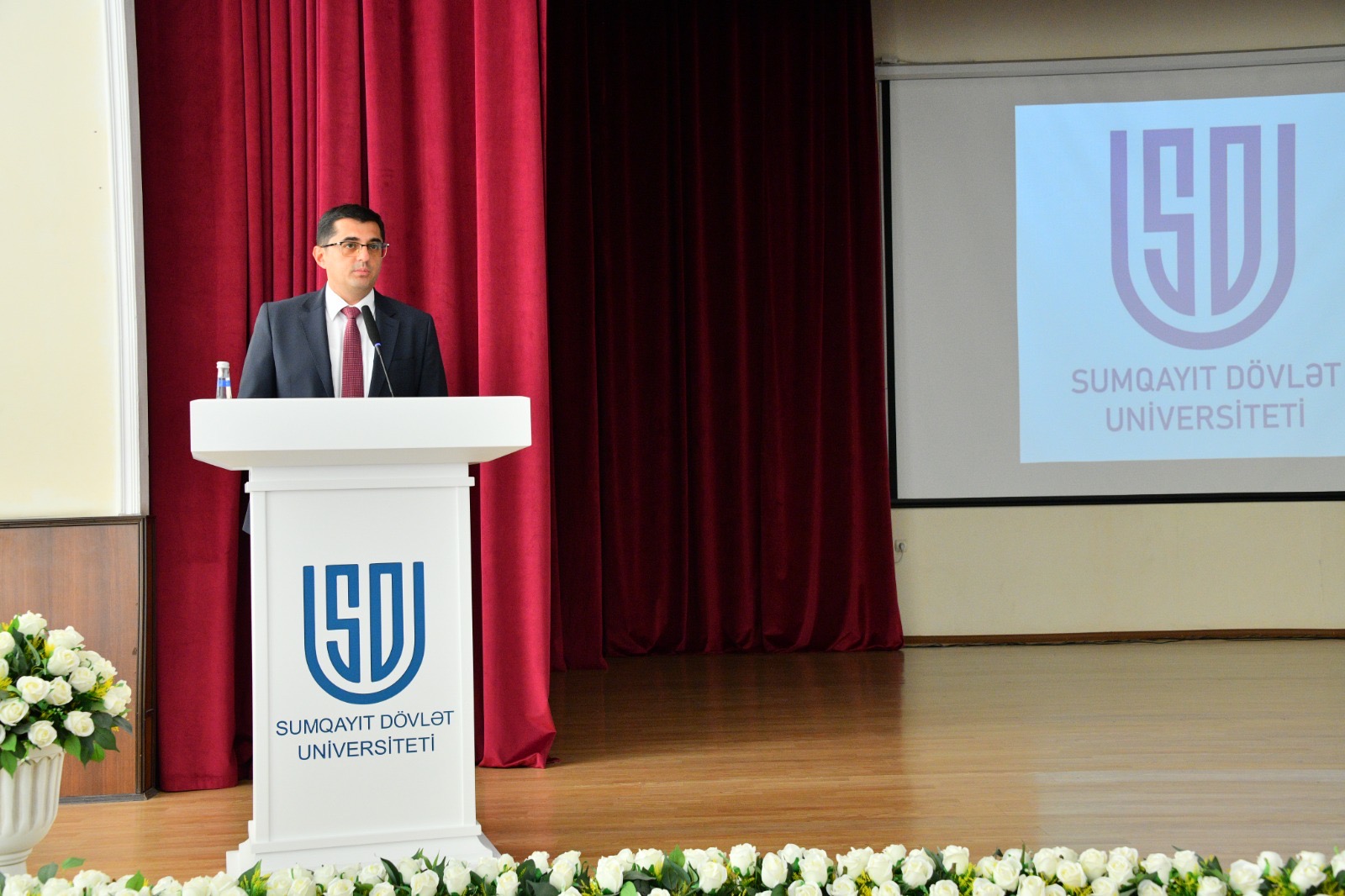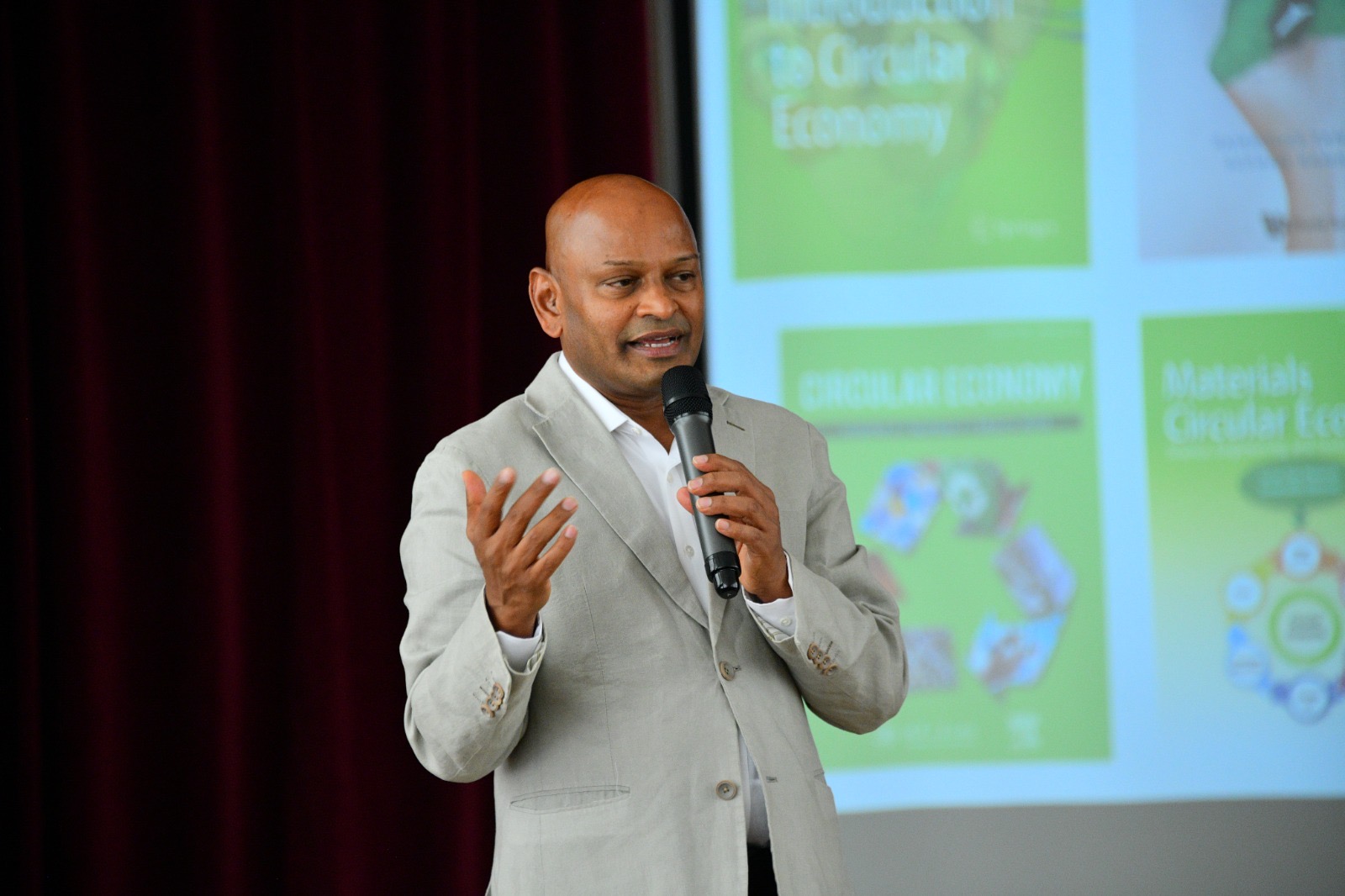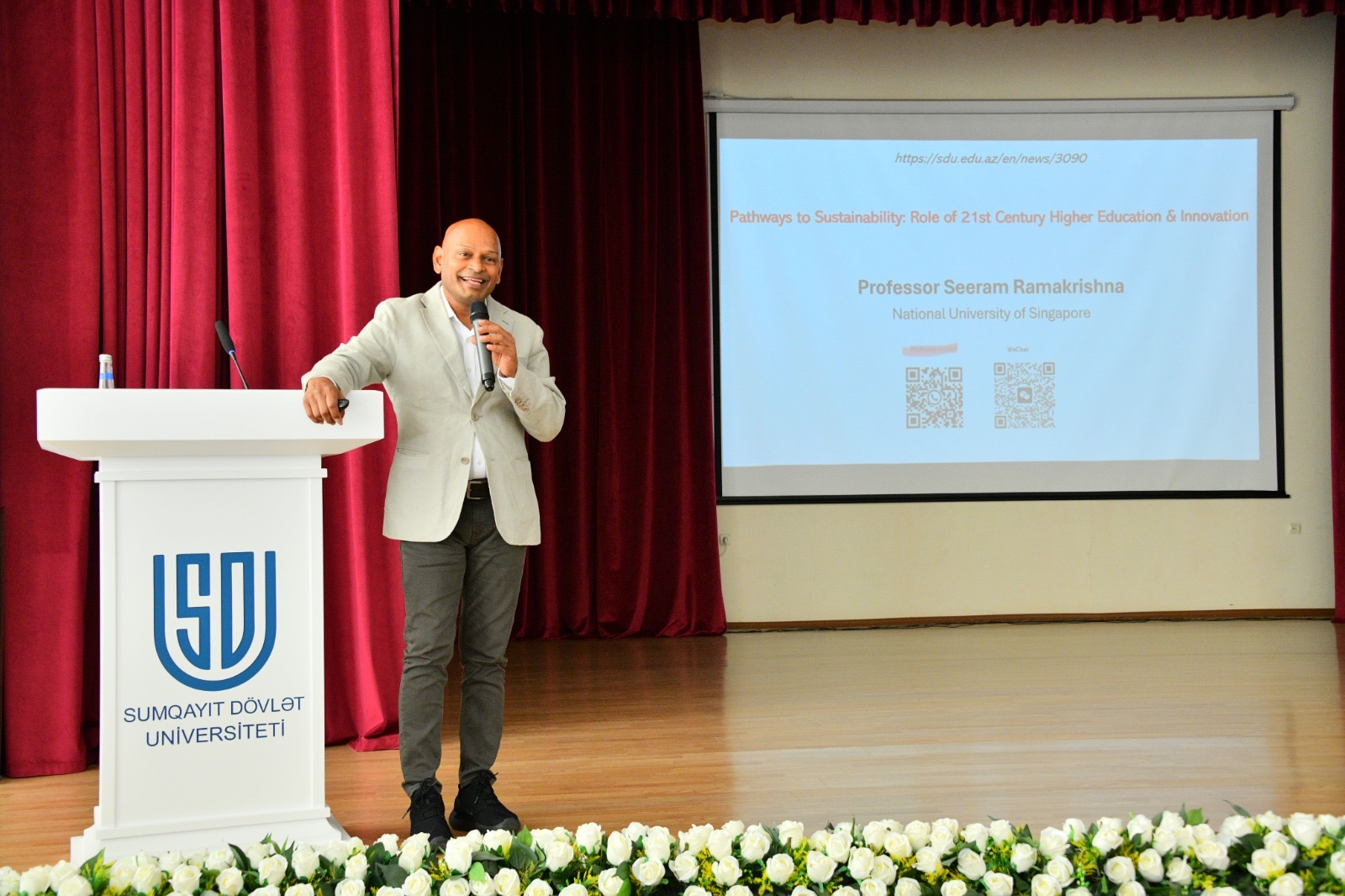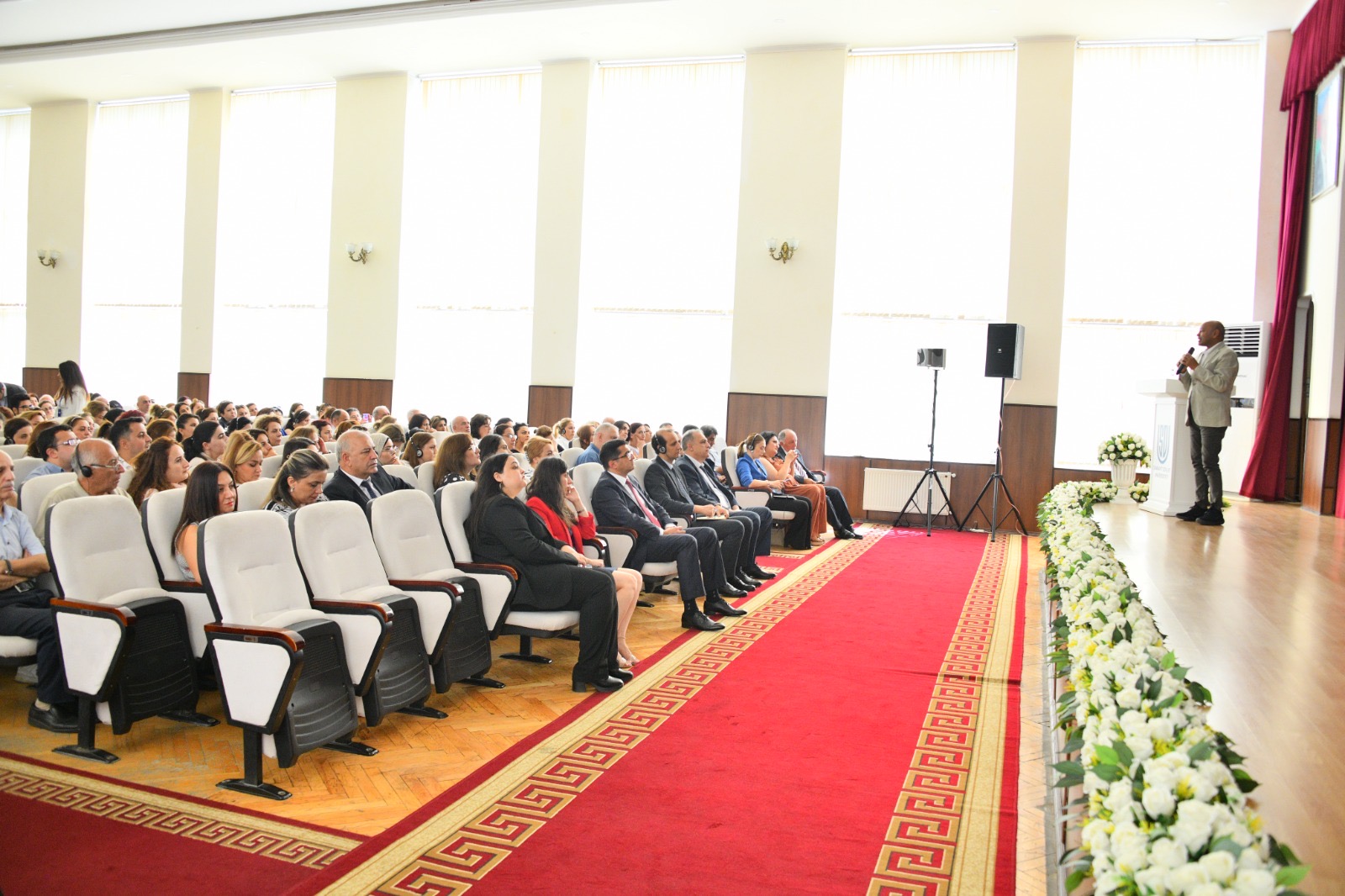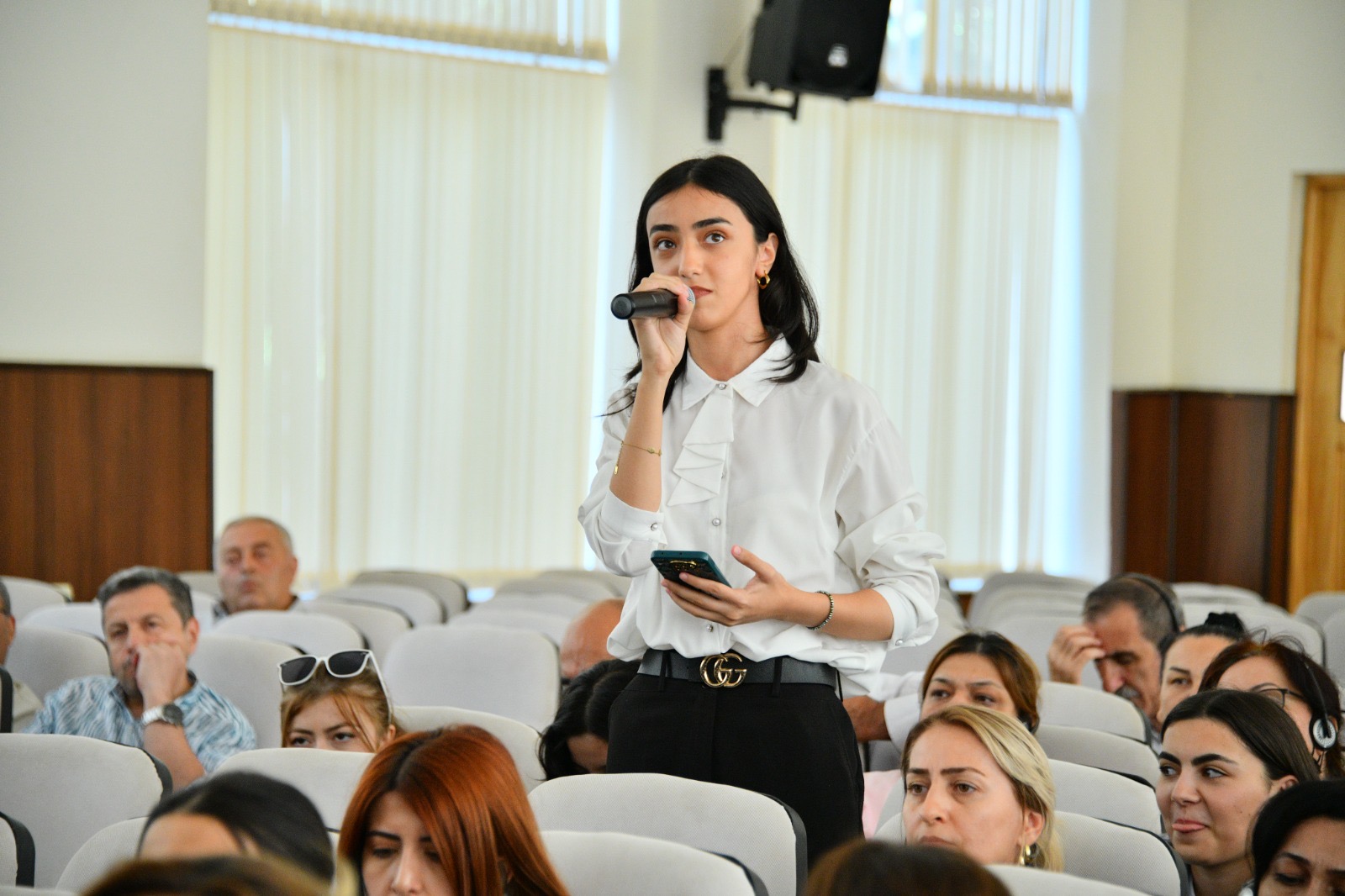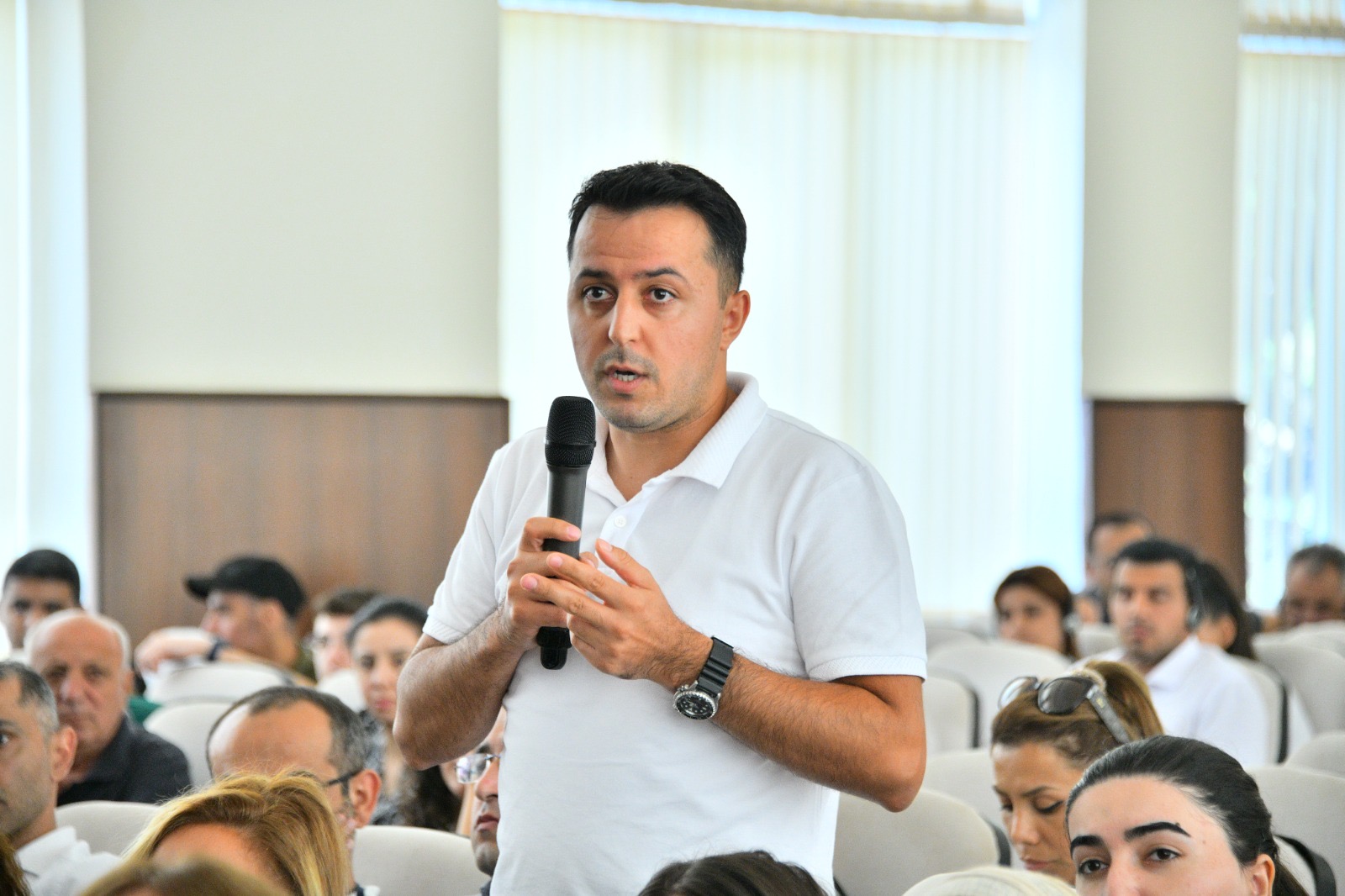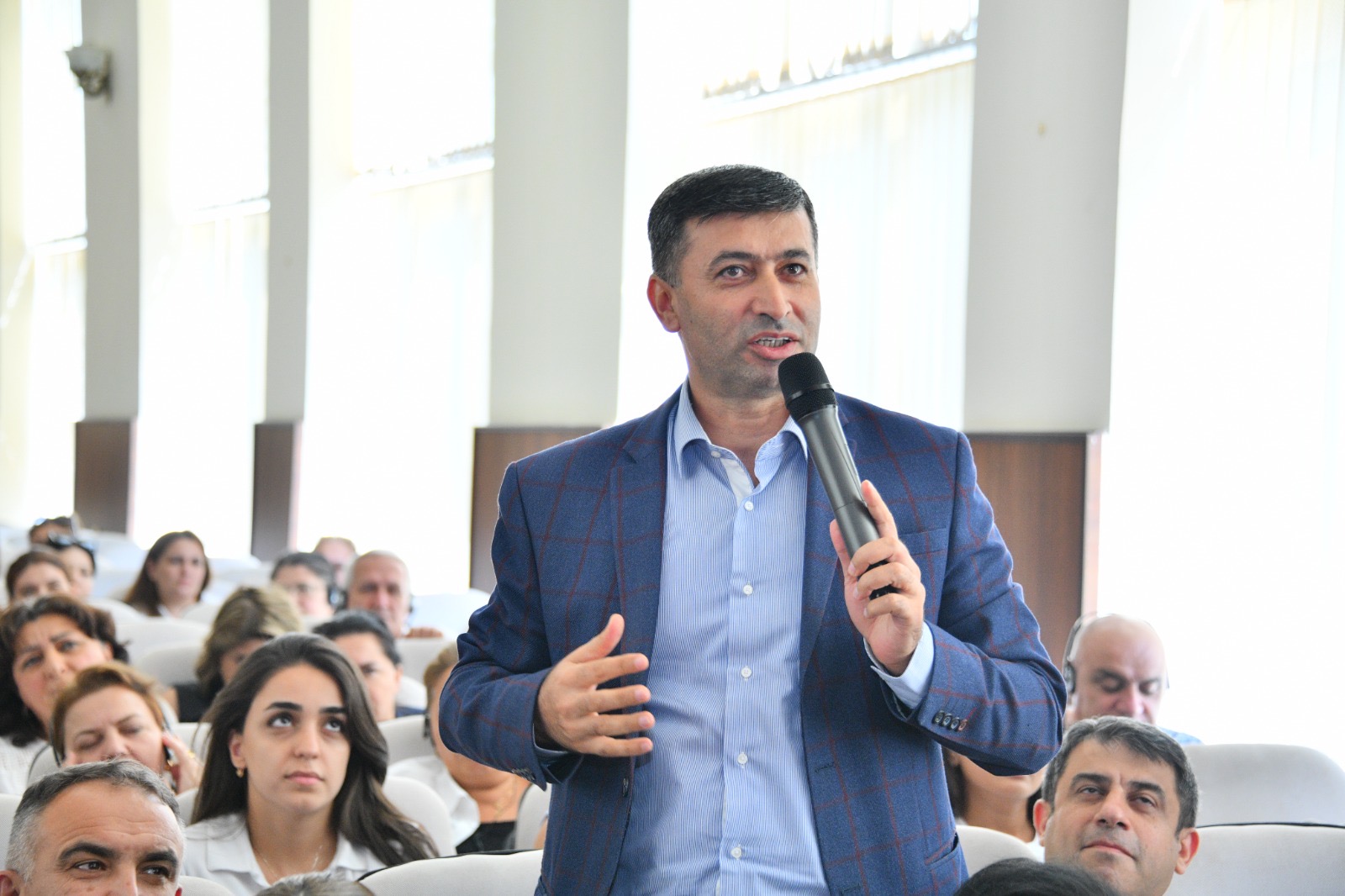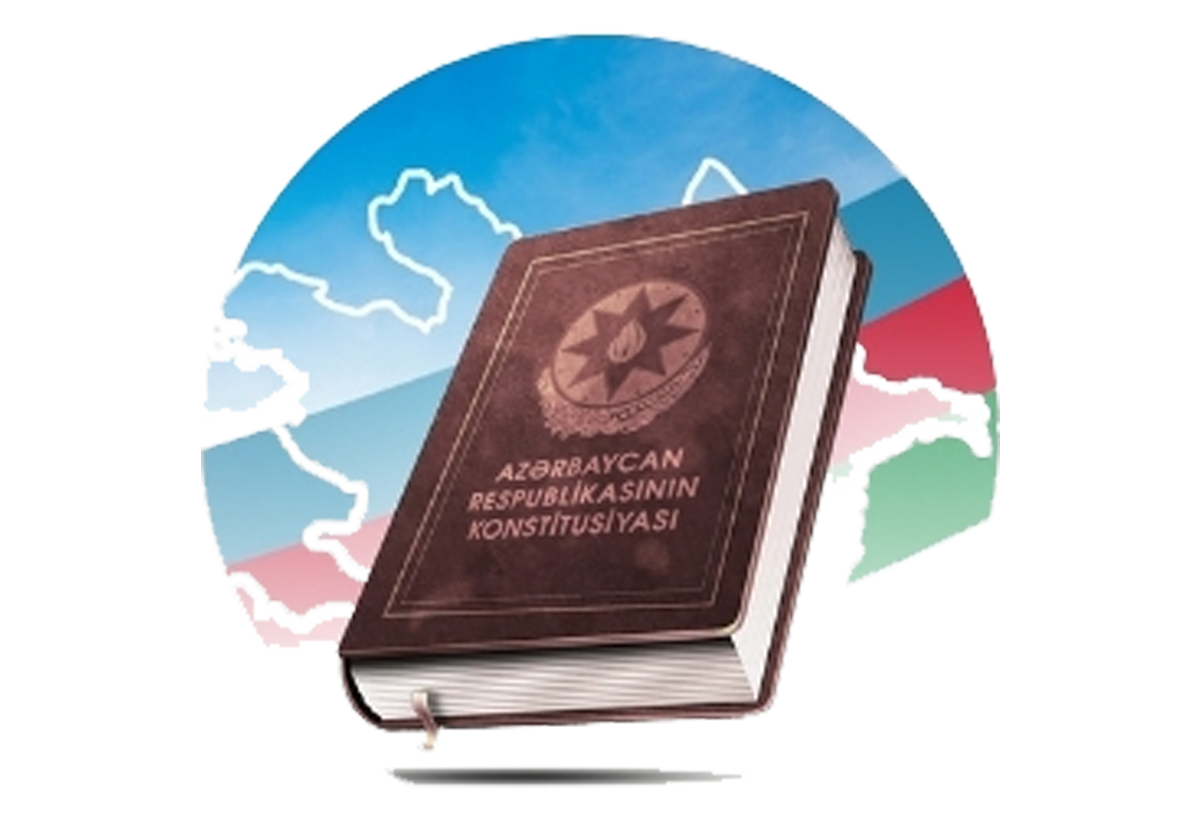On September 11, Professor Seeram Ramakrishna, Director of the Centre for Sustainability and Nanotechnology at the National University of Singapore (NUS), which ranks among the top 8 universities in the world according to QS World University Rankings, delivered a public lecture at Sumgayit State University (SSU) titled “Pathways to Sustainability: Role of 21st Century Higher Education and Innovation”.
Habiba Nazirova, Head of the International Cooperation and Strategic Projects Department, opened the event and spoke about the accomplishments of Professor Seeram Ramakrishna, who is one of the most cited and influential scholars in the world. He is an elected International Fellow and Academician of Chinese Academy of Engineering; UK Royal Academy of Engineering; Indian National Academy of Engineering; ASEAN Academy of Engineering and Technology; and Singapore Academy of Engineering. His academic leadership includes NUS’s Vice-President (Research Strategy); Dean of NUS Faculty of Engineering; Director of NUS Enterprise; and Director of NUS Nanoscience & Nanotechnology Initiative.
Rufat Azizov, Rector of Sumgayit State University, expressed his pleasure at hosting Professor Siram Ramakrishna at SSU and emphasized the importance of the event in terms of understanding the research needs of industrial enterprises and conducting joint scientific research. The Rector also spoke about the university’s goals, the new academic year, and emerging challenges.
During the event, Professor Seeram Ramakrishna first provided detailed information about the rapid development and economy of Singapore, which has one of the most skilled workforces in the world. He then discussed the factors contributing to the rapid rise of NUS as one of the world’s top universities. The lecture covered educational, research, and innovation strategies for universities to achieve sustainable development, the establishment of beneficial collaborations with companies, favorable national policies and regulations regarding higher education and innovation, and the best global practices in these areas.
- About us
- Structure
- Science
- Education
- International
- Social
- Sustainable Development
